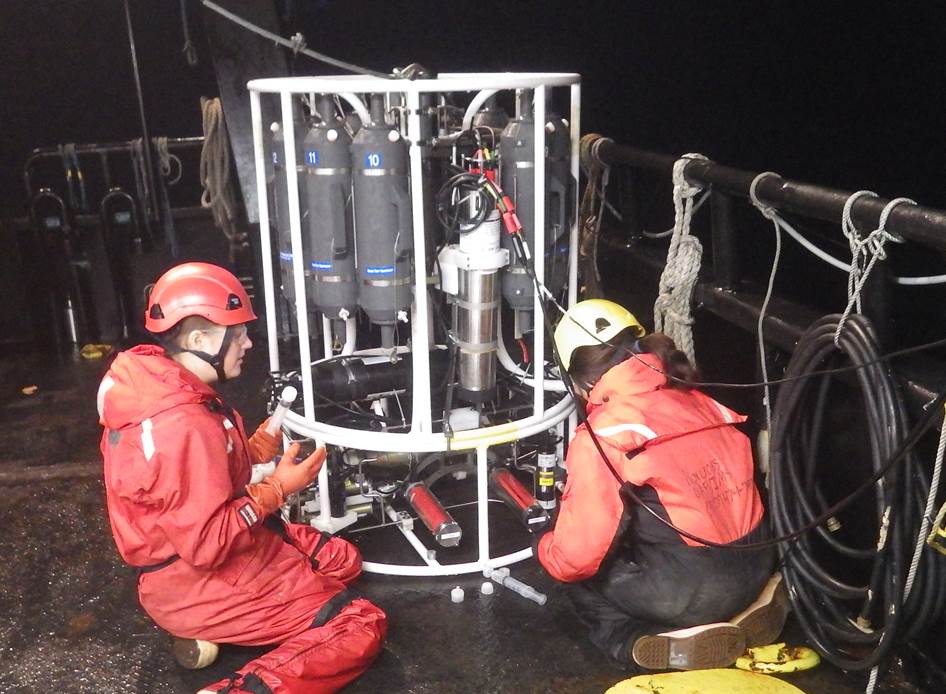 Water masses enter the Chukchi Sea from the Pacific through Bering Strait and are then modified during their mostly northward flow on the shelf. The water masses are mainly characterized by their temperature, salinity and nutrient content. The relatively warm, fresh and nutrient poor Alaska Coastal Water hugs the Alaska coast. The middle shelf is a mixture of Bering shelf and Anadyr water, characterized by colder temperatures, higher salinity and high nutrients. Winter water is very cold and salty and is produced during sea ice formation on the shelf in winter. During AMBON, hydrographic conditions are measured from temperature and salinity profiles taken with a Seabird SBE55 CTD. [AMBON scientist: Seth Danielson]
Water masses enter the Chukchi Sea from the Pacific through Bering Strait and are then modified during their mostly northward flow on the shelf. The water masses are mainly characterized by their temperature, salinity and nutrient content. The relatively warm, fresh and nutrient poor Alaska Coastal Water hugs the Alaska coast. The middle shelf is a mixture of Bering shelf and Anadyr water, characterized by colder temperatures, higher salinity and high nutrients. Winter water is very cold and salty and is produced during sea ice formation on the shelf in winter. During AMBON, hydrographic conditions are measured from temperature and salinity profiles taken with a Seabird SBE55 CTD. [AMBON scientist: Seth Danielson]
